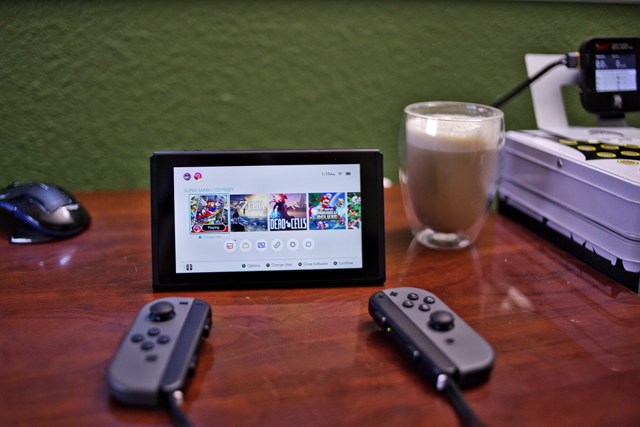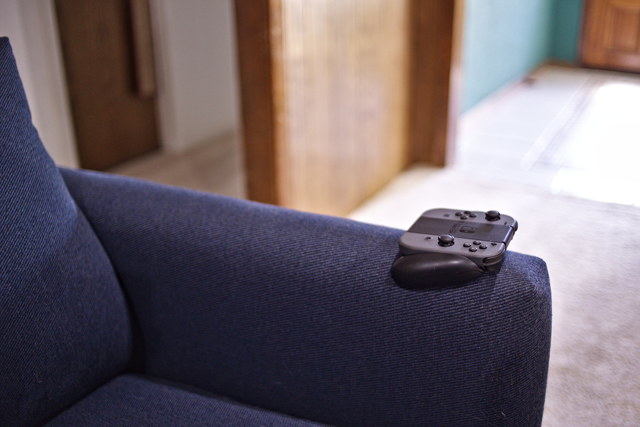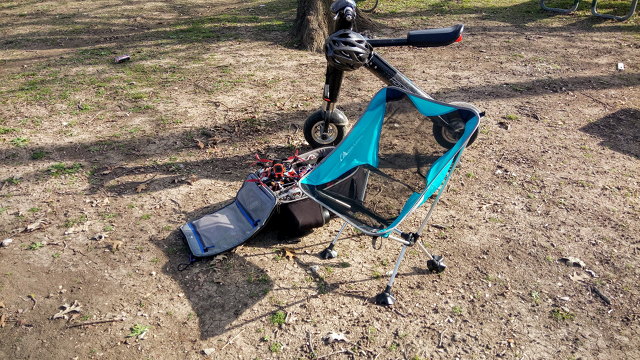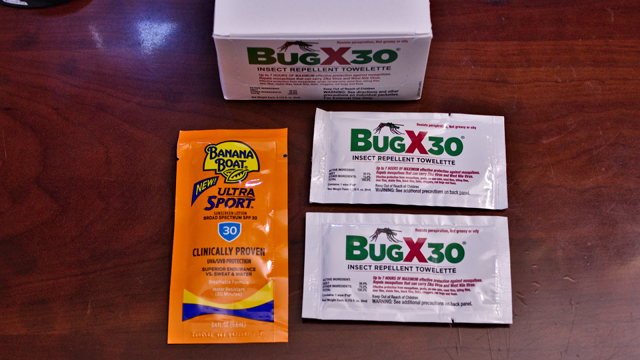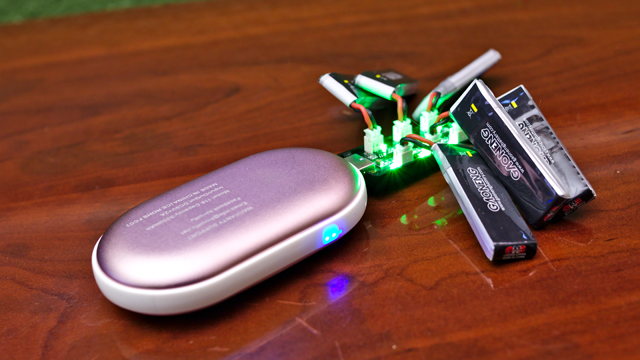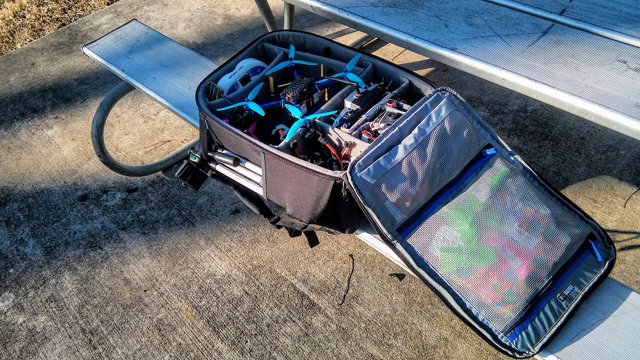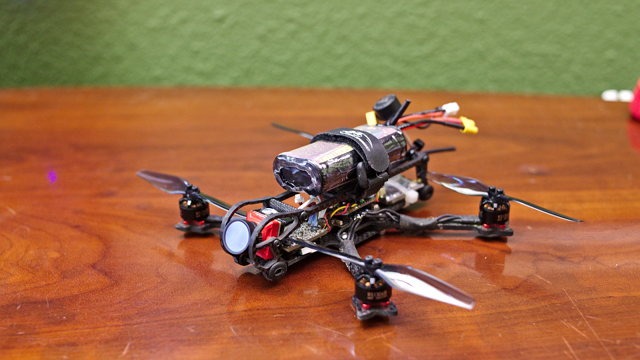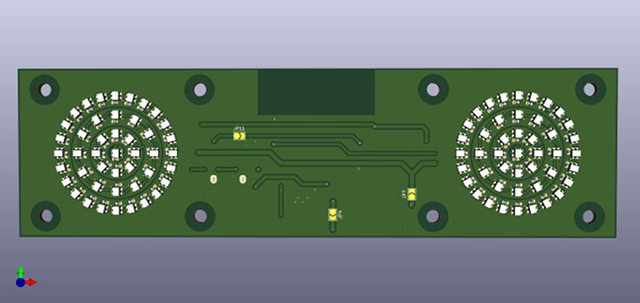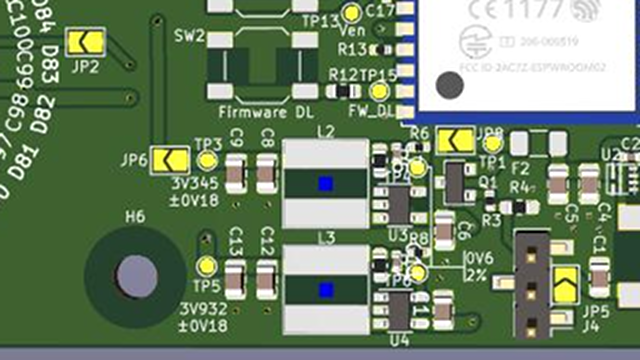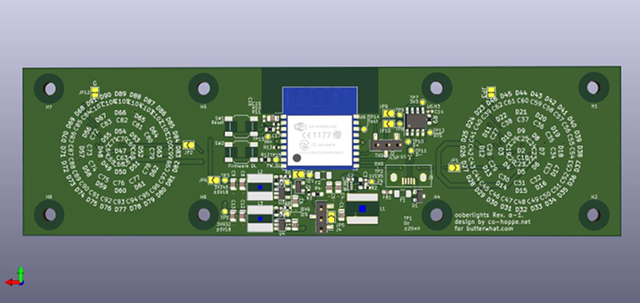It will probably be closer to six weeks by the time I manage to actually hit publish on this blog post. Math says my electric unicycle (EUC) arrived at my house 36 days before I started writing this paragraph. The 10-day forecast lists rain for at least the next seven days, so I won’t be riding for the next week. Even if I’m late getting all the photos and videos together for this post, I definitely won’t be exaggerating my riding time!
NOTE: While writing this, I clicked past 100 miles on my EUC’s odometer!
I almost feel like I know what I’m doing!
I can ride more than two miles without stopping. I can ride on grass. I can ride on rough pavement, and I can handle bumps and potholes. I can transition from riding on pavement to riding on grass. I can ride slowly and negotiate tight turns. I can get on and off the unicycle without looking like an idiot most of the time too!
I also find myself triggering the max speed alarm on my InMotion V5F quite frequently. This wheel is only rated for 15 mph, and I hit that speed on just about every trip I take now. I’m not unhappy with this limitation, though. I don’t really want to be going any faster than this on my local bike paths!
I’ve managed to travel 6 miles on a single outing. I’ve managed to travel 9.5 miles in a single day.
I’m able to ride with a 12-pound backpack while drinking a latte out of a foam cup. When I started learning to ride, I would get wobbly just trying to adjust my glasses!
- I Bought an Electric Unicycle: I Have No Idea What I’m Doing
- Two Weeks with My InMotion V5F Electric Unicycle
Who can ride an electric unicycle?
I’m nearly 43 years old. I weigh about 200 pounds. I’ve never ridden a skateboard. I spent a ton of time riding my bike when I was a kid, but I’ve barely ever even touched a bike since I was 14.
Am I doing a good job with this electric unicycle contraption? pic.twitter.com/7cmyUVTUdL
— Pat Regan (@patsheadcom) February 4, 2020
I’m not athletic. I don’t think I have an above average sense of balance. If I can learn to ride a unicycle, you probably can too!
You’re not just going to get on and be riding in an hour. It isn’t intuitive. It takes practice. Lots and lots of practice!
- I Bought an Electric Unicycle: I Have No Idea What I’m Doing
- Two Weeks with My InMotion V5F Electric Unicycle
Hey, Pat! What is your use case for the InMotion V5F unicycle?
My hobby is flying FPV freestyle miniquads. I want to be able to load up my backpack and head to a fun spot to fly!
I already have a Hover-1 XLS folding electric scooter. It is a lot of fun, and it does this job well. I’m two houses away from the bike trails that connect many of the parks in my city. I can hop on the bike, ride for ten minutes, fly for a while, then ride home.
The Hover-1 XLS does a great job getting me to nearby flying spots. I have put nearly 400 miles on it already. My problem is that the e-bike is heavy and bulky. It is difficult to get it in the car.
I’m hoping to replicate my success I’ve had with my bike, but I want to be able to start my FPV freestyle miniquad adventures from a location other than my house. I’d like to drive the car 20 minutes away, then ride the EUC three more miles, then fly from there!
- I Bought an Electric Unicycle: I Have No Idea What I’m Doing
- Two Weeks with My InMotion V5F Electric Unicycle
You’ve had this thing for a month already! Is it going to meet your needs?!
Yes. I’m still almost entirely convinced that the inexpensive little InMotion V5F is the perfect fit for me.
The InMotion V5F weighs only 25 pounds. That’s half as much as the Hover-1 XLS. The InMotion wheel has a handle on top. It takes me five seconds to toss it in the car. I don’t have to fold it up. I don’t have to figure out how to heft it up and into the trunk. I don’t have to unfold it when I take it out of the car. It is ready to ride immediately.
Hell yeah! I made it to the lake on my electric unicycle! pic.twitter.com/AWQcE6KqHX
— Pat Regan (@patsheadcom) March 5, 2020
I haven’t taken it on one of these away missions yet, but I rode two miles into the park with my laptop backpack for the first time a few days ago. I didn’t even notice the backpack. I’m not sure I’d want to take my fully loaded 25-pound backpack with me, but my 12-pound FPV backpack will be no problem at all!
I was also hoping I could use the unicycle to help me retrieve crashed miniquads more efficiently. I’m able to ride in the grass pretty well already, so this is almost certainly going to be possible!
What downsides are you noticing, Pat?!
When I ride the unicycle or the e-bike to the park, people are always stopping me to ask me about it. This is awesome, but it didn’t take long before I figured out the most disappointing problem with the unicycle.
Every time someone asks me about the e-bike, I offer to let them take it for a spin. I’d say about 1 out of every 3 people take me up on the offer, and every single one of those people have had success. They all seemed to have a good time too.
I wouldn’t even consider offering to let someone ride the unicycle. It took me 20 minutes or more just to learn to stay on long enough to ride 15 feet. I’ve let friends try, and some of them got scared immediately when they couldn’t balance even while holding on to their car.
The learning curve is the major downside.
Getting over the hump in the learning curve is rewarding
There are several points during my training where I had a great feeling of accomplishment. Just being able to ride 10 feet without holding on to a wall felt amazing, and that took at least 20 minutes of practice!
I can’t explain how to ride better. Something just happens in your brain. You go from barely being able to stay upright on the damned thing to just being able to ride until you decide it is time to stop. Once you hit that point, things seem to progress so much faster.
I thought I was going to have to cut this into two clips, but I guess I shouldn't have. I never had any idea which way Alex was going to go, and there's a weird transition near the end where he turns around, but this isn't too bad otherwise! pic.twitter.com/ElqMZmyrLF
— Pat Regan (@patsheadcom) January 6, 2020
What’s the payoff here? Almost any adult can ride an electric bike. It is supposedly an awful lot easier to learn to ride a OneWheel XR. Why put in the effort to learn to ride such a difficult mode of transportation?
It comes down to some combination of cost, performance, and form factor.
My e-bike is big, heavy, and cumbersome. My refurbished unicycle cost less, weighs half as much, and performs similarly to my e-bike.
The OneWheel XR beats or matches my little InMotion V5F in almost every measure except price. Where the OneWheel beats my unicycle, it doesn’t usually beat it by a lot. The OneWheel is 4 mph faster, and the published specs say it has 5 miles more range than I’m expecting to see on my InMotion V5F.
Where my unicycle really beats the OneWheel XR is on price. My refurbished V5F cost me $399 shipped. Full price is still only $649. Either price is so much cheaper than the $1,849 price tag on the OneWheel XR. Not only that, but my little $399 unicycle beats the OneWheel Pint’s specs in almost every way at half the price.
The OneWheel XR is the upper limit for a OneWheel too. There are plenty of unicycles, like the Gotway Nikola, that can reach speeds of nearly 40 mph, and these machines have a range of something like 70 miles on a charge. They’re big, heavy, and ridiculous.
I think the best part about unicycles is the number of available options. I’m riding one of the smallest, cheapest unicycle options. There’s a lot of choice, so there’s more likely to be a wheel that meets your needs at a price you can afford.
- I Bought an Electric Unicycle: I Have No Idea What I’m Doing
- Two Weeks with My InMotion V5F Electric Unicycle
What about an electric skateboard?
My friend Brian has an Exway X1 Riot Pro longboard. It looks like a lot of fun, and the price, performance, and range of his skateboard are all quite good. Better still, his e-skateboard has as much range as my InMotion V5F, but it weighs about half as much!
Brian’s Exway X1 Riot Pro Skateboard
My biggest problem with skateboards is the tiny wheels. You feel every tiny bump in the road, and there’s no chance you’re going to ride well on grass.
They closed a short stretch of the bike path for construction at my local park, and you have to sneak through 20 feet of grass to bypass the closure. On my electric unicycle, I’m able to just ride through the grass as though it were pavement.
A refurbished InMotion V5F is a no-brainer!
I keep saying this. I’ve written it several times, and I’ve said it to quite a few people in person.
I ran into a EUC enthusiast while I was riding at the park last week. I forget which wheel he’s upgraded to, but he told me he started with the InMotion V8, and he was wondering why I chose the V5F.
I told him I was waffling on whether or not I should buy a EUC at all, then I saw a refurbished InMotion V5F in the InMotion store for $399. It was cheap enough that I couldn’t pass it up. I can tell by the face he made that he was quite surprised at how low the price was.
You’re going to fall off your new EUC. It is going to hit the pavement, and it is going to hit the pavement a lot. You have no idea what you’re doing. My InMotion V5F has so many scars!
If you can snag a $399 InMotion V5F, I would highly recommend doing it. I haven’t seen one in stock since I bought mine, though.
I don’t think I would pay the full price of $649 for a brand new InMotion V5F. The InMotion V8 is a pretty significant upgrade for a few hundred extra bucks. There is also the King Song 14D in this price range.
- I Bought an Electric Unicycle: I Have No Idea What I’m Doing
- Two Weeks with My InMotion V5F Electric Unicycle
Lots of people recommend starting with a used electric unicycle
This seems like fantastic advice. My wheel has been dropped on the pavement so many times. I’ve dropped it. My friends have dropped it. My wife has dropped it. I’ve definitely dropped it the most, though!
Your first wheel is going to acquire quite a few battle scars. Why make your $2,000 purchase look ugly? Start with something cheap, right?!
I checked around. I couldn’t find any unicycles for sale. I’m not currently seeing any electric unicycles listed on Craigslist anywhere in the Dallas/Fort-Worth metro area.
Do you regret purchasing one of the cheapest, slowest electric unicycles?
I’m starting to hit the speed limit warning beeps several times on every trip I take. I believe the warning goes off at 15 mph, and the WheelLog app tells me my top speed has been 16.4 mph.
If your goal is to go fast, the InMotion V5F is probably not the right wheel for you. I don’t want to go fast. I want to be able to ride a few miles with my backpack, and I want to get to my destination faster than walking, and I don’t want to be tired and sweaty when I get there.
For my use, the 15 mph speed limit of the InMotion V5F is almost perfect. If something goes wrong while I’m riding at 20 mph, I am almost definitely going to fall. The slower I ride, the more likely I am to stay on my feet in the event that I need to rapidly dismount. I think I can run for a few paces at 15 mph, but I’d be in trouble at 20 mph!
- I Bought an Electric Unicycle: I Have No Idea What I’m Doing
- Two Weeks with My InMotion V5F Electric Unicycle
I should mention the Gotway MTen3
The Gotway MTen3 looks like it would be a great fit for my use case. At $599, it costs less than a new InMotion V5F. It has a higher top speed, more range, and it weighs a few pounds less too.
The only downside is that 10” tire. The bigger the tire, the smoother the ride.
I lucked out when I snagged the InMotion V5F for $399. That made the decision easy for me!
If I had to buy new, I would have had to choose between the InMotion V8, the Gotway MTen3, and the King Song 14D. I would have been very tempted by the MTen3!
Have you gotten hurt?
I have fallen off my EUC a lot. I have yet to land on anything other than my feet.
I figured I'd ride my EUC, because it isn't supposed to rain again until after dark. There's a lot of slick mud on the bike trail. My unicycle wiped out! The crash footage from my helmet camera is way less exciting than I had hoped! pic.twitter.com/USWFZPxrGz
— Pat Regan (@patsheadcom) March 15, 2020
During the first few days, I wasn’t always good at falling. Sometimes I would dismount, and the wheel would swing around and drive directly into my right shin. That shin was pretty bruised up, but I certainly wouldn’t call it a serious injury.
Conclusion
If you can walk, run, and ride a bike, I have every confidence that you can learn to ride an electric unicycle with a few hours of practice. I am confident that you can go from barely being able to stand on the thing to riding down sidewalks and through parks in two or three weeks.
Learning to ride a EUC has been fun, and now that I’m able to ride pretty well, just riding is a lot of fun too! This thing is a handy mode of transportation, and I’m excited about having it available to me.
What do you think? Did I choose almost exactly the right EUC for my needs, or am I going to be wanting to go 40 mph on a Gotway MSX Pro in a few months? Are you already one of the rare unicycle riders, or are you looking to buy your first EUC? Let me know in the comments, or stop by the Butter, What?! Discord server to chat with me about it!
